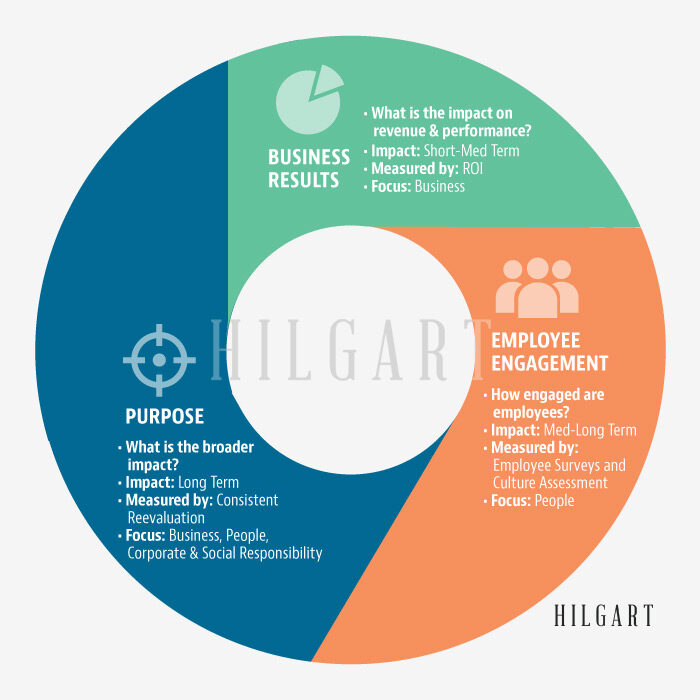
In 2020, how we engage and develop employees is changing fast. For the past six months, fueled by the pandemic, many employees have transitioned to working online and using advanced technology in scenarios from strategy sessions to team engagement meetings to leadership programs. The pace of change often consumes us so much it feels there is no time to look back.
But as September marked the 10th anniversary since the founding of Hilgart, I dedicated time to reflect on what has changed during the past decade and how it led to where we are today. I then share what it means for our future practice engaging and developing people in organizations.
It is worth noting I do not attempt in this single post to tackle the recent academic contributions of Adult Learning and Leadership, which have been vast and will be the subject of a future article. Rather, I speak in this post from my lived experience in the space of developing people in organizations, and the shift I saw in client organizations in the industries where we worked during the past decade.
People Strategy More Integrated with Business Strategy
Nearly ten years ago, soon after I started working independently, I embarked on a culture change project. My client’s business was thriving, but their people were disengaged and unhappy. A leader acknowledged to me at the time, “we have spent the past few years developing and getting our business strategy right, and now we need to focus on our people.” This mindset was not unusual.
It was common to see this splitting between “business” and “people” as two separate halves of an organization’s focus. During a large-scale change or reorganization effort, it was most typical at the time for our team to be called in to simply “skill up” employees to meet the skill gap of the shifting organization.
But, over the years, we have noticed organizations involving Talent/Development and HR teams earlier in the process. In 2014, we created this graphic to illustrate this shift, to help leaders check themselves on which of these three areas they were most focused on and consider how to achieve more of a balance.
Leadership Focus Model

Now, rather than an after-lunch 90-minute session focused on “HR topics” as part of the leadership offsite, we’re more likely to see HR and Talent and Leadership professionals involved from the beginning.
Focus on Purpose
It is no coincidence that Purpose was a key element of our 2014 model. If there is one thing that was a consistent theme throughout the 2010s, it was the way leaders and teams were brought back to the “who are we” and “why are we here” questions.
After the Financial Crisis of 2008, as organizations recovered and rebuilt themselves, we saw more time for self-reflection and these softer topics than in the previous decade. Leaders and employees alike had a yearning to reconnect people back to what is important – to meet their personal values and common, shared purpose.
Change in Employee Expectations and Use of Engagement Data
The shift also reinforced changes in the workforce and caused people’s expectations of their employers to change. A decade ago, the typical approach was to have an annual Employee Engagement Survey. Unfortunately, this often meant that by the time the results were in, analyzed, and insights sent back to the business, their thoughts, feelings, and the organizational landscape had shifted. Much of what was gathered in the survey was obsolete.
As the decade progressed and the millennial generation became the prominent swathe of the workforce, these employees looked to their employers to better understand their need for meaningful careers and consistent career progression. Employees began to expect more real-time response to their input and feedback, and organizations sought to involve employees more deeply in shaping the organizational culture.
Shift From “Learning Events” to “Learning Experiences”
With meaningful career progression becoming paramount, the focus on how people learn was a popular topic. Even before 2010, Learning and Development practitioners commonly circulated the “70/20/10” rule, estimating formal coursework and training as only 10% of learning, with 20% coming from interactions with others, and 70% through on-the-job learning. A similar model, The Learning Pyramid, which suggests that lecture and other passive activities are the least effective way to learn, further differentiated the types of learning. Both of these models framed learning and development as a broader set of activities than the classic formal learning approaches, but they were not without criticism. Litrub (2012) asserted that the Learning Pyramid is too prescriptive and called for it to be redacted based on a lack of empirical evidence.
However, the floodgates had opened. The debate around how adults learn prompted widespread acknowledgment that there is a broad range of learning activities that should be part of employee learning plans. What Adult Learning researchers had understood for decades, about how people learn in organizations was getting greater traction. This moved the dial from the start of the decade, where the corporate world broadly framed learning agendas around classroom learning, to Learning and Development leaders successfully advocating that experience-based learning was a vital addition to employee learning plans. On-line or other “self-paced” options that were previously treated as “reinforcement” or “transfer” of learning, were now recognized as essential elements of learning program design.
It is worth noting that most organizations have only begun to tap into the significant contributions that Adult Learning and Leadership and Adult Development researchers have made during this decade. As I said at the start, these will be the subject of a future article as tapping into the depth of these contributions will help strengthen organizations’ people strategy even further.
Looking forward
As we move to a mostly virtual learning and development environment for the foreseeable future and fundamentally shift the way learning and development happens, I believe understanding our past trajectory can inform how we move forward. These are the major shifts I see developing further from where we are today, and how our new programs help to make that shift.
The Deeper Alignment of Strategy, Purpose, and Engagement
In 2020, not only does HR have a seat at the table, in the most forward-thinking organizations, the people strategy is a fundamental, indispensable element of the business strategy. Leaders recognize that all internal functions of the business directly impact the external experiences or services customers receive.
Forward-thinking companies see the vital role frontline managers play in helping organizations achieve their strategic goals, especially in times of rapid change and increased pressures on teams. Indeed, my (Hilgart, 2017) research points to the critical role direct managers play in shifting employee mindsets and skillsets to better align with the changing needs of organizations. Leaders now see managers as the strategy translators responsible for their team’s alignment to a vision and organizational goals.
Leaders also recognize this way of working requires managers to increasingly step up beyond the classic “delegator of task” manager mindset, to see their manager role as a strategic one. Managers need to learn the practical skillsets and mindsets to motivate, engage, and coach their teams to achieve their department and the organization’s goals. The challenge lies in finding support to help these managers make that shift. Our new, virtual programs for managers target this gap by enabling organizations to help managers thrive and bring their teams along with them.
But leaders also need support. Whether the change is a pivot in focus due to the pandemic, or part of a larger scaler reorganization effort with a new operating vision, leaders need to be able to empower change in their organizations. Our programs equip and support leaders of change on this journey.
But what makes our approach different from other management and leadership programs?
A Shift Toward “Learning Pathways” and Emphasis of “Self-Directed Learning”
The conventional way of thinking about learning is being phased out and replaced with the “Learning Pathway” concept. Learning Pathways emphasize that learning is a series of educational activities, formal and informal, that make up a professional’s development in a specific area. If someone is on the path to becoming a team manager, for example, a “learning pathway” would include a range of activities, like coaching, mentoring, curated articles, videos, and suggested on-the-job or other experiences that help them develop. Our programs take this vital shift into account and equip learners – whether leaders, managers, or employees on the ground – to make this critical mindset shift and apply it in the context of their unique role in the organization.
In Summary
In recognizing the developments I’ve highlighted here throughout the past decade, I am grateful for how far the People Development agenda has come. Far more than a shift from “in-person to on-line learning” and a pandemic-induced need to “put people first,” where we are now – and how equipped organizations are to accomplish it – are a result of many years in the making.
I believe we can support and prepare our people for the future because of what we’ve experienced and learned over the last decade and more, and how we’ve applied this to help people learn and develop in more human-centered ways than ever before for 2020 and beyond.
Interested in learning more about Hilgart? Click here.